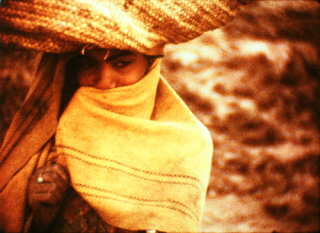The Day of Reckoning
Date: 2 July 2000 | Season: Miscellaneous
THE DAY OF RECKONING
Sunday 2 July 2000, at 6:00pm
London Battersea Arts Centre
The night is long and it is hard.
REINDEER SLAUGHTER AT LAKE KRUTVATTNET
Louise O’Konoe, 1967, b/w, silent, 6 min
This film documents the slaughtering of reindeer by Norwegian and Swedish Sami (Lapps) on Lake Krutvattnet in Norway, close to the Swedish border. It records some of the steps involved: driving the herd into the enclosure, catching and killing them (with a knife or bolt gun). (Louise O’Konoe)
LE SANG DES BETES
Georges Franju, 1949, b/w, sound, 20 min
Amidst steaming blood and men wading in excrement, even Vietnam and the concentration camps are not too far away. The killing of animals in Paris slaughterhouses becomes a poetic metaphor of the human condition. When the butcher raises his axe-like tool to stun the animal, the camera stays with him to the bitter end; there is no attempt either to protect or cheat the spectator; we must come to terms with daily slaughter committed in our name. (Amos Vogel)
UNSERE AFRIKAREISE
Peter Kubelka, 1966, colour, sound, 13 min
Peter Kubelka’s savage montage of safari footage was commissioned from him by Austrian tourists. His Unsere Afrikareise documents and subverts the voracious eye. Scraps of folk-song and banal conversation are cut to images of hunted or dead animals, and universal myth (evoked by tourists admiring the moon) is undercut by neo-colonial reality. (A.L. Rees)
DIPLOTERATOGY, OR, BARDO FOLLIES
Owen Land (formerly known as George Landow), 1967, colour, silent, 20 min
A paraphrasing of certain sections of the Bardo Thodal (Tibetan Book of the Dead). The analogy of the film is between the process and the basic operating procedures of the system of which we are all part, sometimes called ‘creation’; the suggestion is that death is not an end but merely the next stage. (George Landow)
THE ACT OF SEEING WITH ONE’S OWN EYES
Stan Brakhage, 1971, colour, silent, 32 min
Stan Brakhage, entering with his camera, one of the forbidden, terrific locations of our culture, the autopsy room. It is a place wherein, inversely, life is cherished, for it exists to affirm that none of us may die without our knowing exactly why. All of us, in the person of the coroner, must see that for ourselves, with our own eyes. (Hollis Frampton)
THE DEAD
Stan Brakhage, 1960, colour, silent, 11 min
A very sombre and intense visual poem, a black lyric full of an open dramatic energy which puts it well above a formal or rhetoric exercise on Time and Eternity. In the visual form of the monuments of the Pere Lachaise cemetery in Paris, the persistent and impenetrable geometric masonry gets to be less a symbol of death than a death-like sensation. (Donald Sutherland)
TIME OF THE LOCUST
Peter Gessner, 1966, black and white, sound, 12 min
A film about the war in Vietnam, compiled from American newsfilm, combat footage shot by the National Liberation Front of South Vietnam and suppressed film taken by Japanese cameramen. Not propaganda but an expression of agony. (Peter Gessner)
MASS (FOR THE DAKOTA SIOUX)
Bruce Baillie, 1964, black and white, sound, 24 min
The Mass is traditionally a celebration of Life; thus the contradiction between the form of the Mass and the theme of death. The dedication is to the religious people (the Dakota Sioux) who were destroyed by the civilisation that evolved the Mass. (Bruce Baillie)
REPORT
Bruce Conner, 1963-67, black and white, sound, 13 min
Society thrives on violence, destruction, and death, no matter how hard we try to hide it with immaculately clean offices, the worship of modern science, or the creation of instant martyrs. From the bullfight arena to the nuclear arena, we clamour for the spectacle of destruction. The crucial link in Report is that JFK was as much a part of the destruction game as anyone else. Losing is a big part of playing games. (David Mosen)
CROSSROADS
Bruce Conner, 1976, black and white, sound, 36 min
Conner bases his film on government footage of the first underwater A-bomb test, July 25, 1946, at Bikini Atoll in the Pacific. The same explosion is seen from the air, from boats and land based cameras. The opening segment emphasises the awesome grandeur; the destructiveness, as well as the dramatic spectacle and beauty. As repetition builds, the explosion is gradually removed from the realm of historic phenomena, assuming the dimensions of a universal, cosmic force. (Thomas Albright)
Film programme compiled by Mark Webber. Thank you David Jubb, Ben Cook, Andrew Youdell and David Leister. Le Sang Des Betes is distributed by the British Film Institute. All other films courtesy of Lux Distribution.
